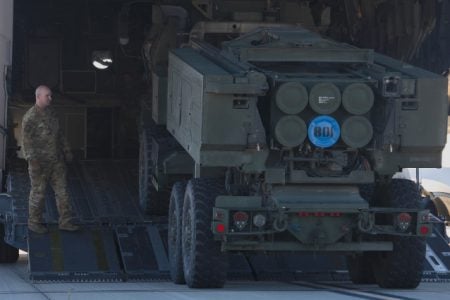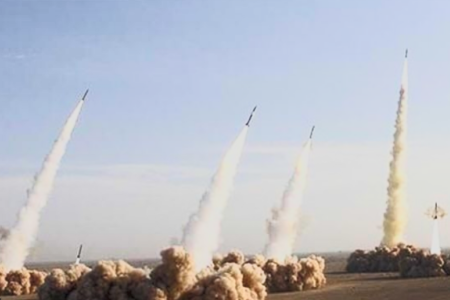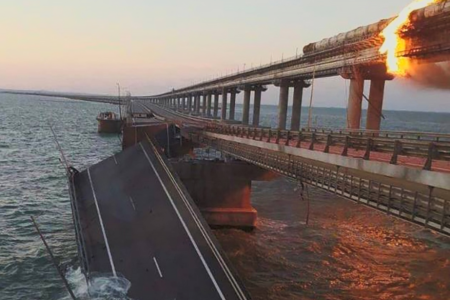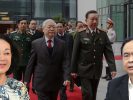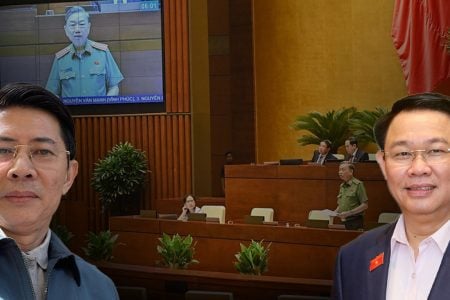
The first online exchange
US President Joe Biden and his Chinese counterpart Xi Jinping had their first online meeting to discuss many existing issues in US-China relations.
The conference began around 8 p.m. on November 15 in Washington, a few hours after Biden signed the infrastructure law, and lasted more than three hours. According to Chinese media, the Chinese delegation participating in the online talks included President Xi Jinping, Vice Premier Liu He, Foreign Minister Wang Yi, Vice Foreign Minister Xie Feng, and Politburo member Ding Tiet. The US delegation includes President Joe Biden, Treasury Secretary Janet Yellen, Secretary of State Antony Blinken, and National Security Adviser Jake Sullivan.
China Central Television (CCTV) said the two leaders “conducted extensive and comprehensive exchanges on strategic, comprehensive and fundamental issues” but did not provide further details.
Why are they meeting now?
Since the 1980s, all US presidents have met the top Chinese leader in their first year in office. This practice is expected to continue under President Joe Biden. In fact, his administration recently announced plans to hold the first virtual meeting between the leaders of the two countries. Aside from two phone calls in February and September 2021, Biden and Xi Jinping have barely had a face-to-face conversation since the White House took on a new owner – although both leaders have had meetings with their counterparts in Europe, Asia, and other regions. In the context of increasing tension in US-China relations, the two countries need to strengthen communication efficiency, especially at the highest level.
The competition for the number one position in the world has made the US-China relationship increasingly tense. In the last 10 years, Washington has taken an increasingly tougher stance towards Beijing, culminating in the years of President Donald Trump’s rule. Since then, the two have engaged in a “prolonged” war on all fronts, from military to commercial, and “on a larger scale than any other international confrontation in contemporary history the whole Cold War.”
On trade, US officials see China as a dangerous competitor. According to analysts, by the end of 2021, China’s GDP will reach nearly 71% of the US’s GDP while during the Cold War in 1983, the GDP of the Soviet Union was equivalent to only 55% of the US’s GDP. China also takes the US’s number one spot in attracting the most foreign investment.
That is why even since President Joe Biden took the throne, although the US’s words are more diplomatic than those of his predecessor Donald Trump, the tough stance against China has remained. In the Interim Strategic Guidelines for National Security, issued in early March 2021 (introducing the first lines of strategic vision), the Biden administration continues to regard China as the “only potential adversary” most capable of combining economic, diplomatic, military, and technological might to challenge in the long term the stable and open international system.
In its annual report published in early November 2021, the US Department of Defense said that China will have the most powerful navy in the world from now until 2030, with 460 warships of all kinds. Within 10 years, Beijing has doubled its military budget, now to 208 billion euros (but still three times less than the US budget, currently $643 billion), and has focused on building up its air and naval capabilities.
In addition, between now and 2030, Beijing will have about 1,000 nuclear warheads, twice as high as the estimate given by the US Department of Defense in 2020. Mr. Danny Russel – Vice President of Security International and Foreign Affairs, Asian Institute of Social Policy – said that with this spectacular acceleration along with the scale of investment in the “nuclear triad” system, it is clear that China is moving away from a policy of deterrence. nuclear to nuclear attack.
It was the fierce rivalry between the two sides that led to this meeting. Each side has its own strategic reasons for promoting the meeting between the two leaders. The Biden administration considers it unacceptable that the leaders of the world’s two most powerful countries do not hold in-depth talks for a year. Although the US Administration seeks to lead by competition in its relationship with China, as two top US officials wrote before entering the White House, it has no intention of rejecting dialogue and diplomatic activities with the Chinese Government.
For his part, Xi Jinping is entering an important year for his political career, a time when he hopes to break convention to continue serving as president for a third term in the Communist Party of China. 20th National People’s Congress of the Communist Party of China. Ahead of this event, Xi Jinping will focus heavily on consolidating his leadership role at home and limiting disruptions in international relations, including disruptions that may arise in international relations. US-China system.
The South China Sea (Vietnam calls it the East Sea) issue and Vietnam’s calculations

The White House announcement of the two leaders’ virtual meeting said:
“President Biden raised concerns about the PRC’s activities in Xinjiang, Tibet, and Hongkong, as well as broader human rights. He was clear about the need to protect American workers and industries from the PRC’s unfair trade and economic activities. He also discussed the importance of a free and open Indo-Pacific and demonstrated continued US determination to uphold US commitments in the region. President Biden reiterated the importance of freedom of navigation and overflight safety to the prosperity of the region. Regarding Taiwan, President Biden emphasized that the United States remains committed to the “one China” policy, guided by the Taiwan Relations Act, three Joint Communiques, and Six Assurances, but the United States strongly opposes its force unilateral efforts to change the status quo or undermine peace and stability in the Taiwan Strait.”
Thus, the East Sea issue was also mentioned by the US side, although not directly, but expressed through the phrase “freedom of navigation and aviation safety.”
A Cambodian scholar in a recent article said that balancing the relationship between the US and China in the context of fierce competition between these two powers has benefited Vietnam.
“The trend of Vietnam-China economic relations seems to suggest that Vietnam will continue to benefit economically from China as long as it maintains its posture of not joining forces with the US. Any intention to oppose China will disrupt economic relations between the two countries, leading to economic losses for Vietnam, whose economy is heavily dependent on China.
This is also the thinking of many foreign policymakers in Vietnam. They want to try to avoid confrontation with these two great powers and want to benefit from this confrontation.
However, things don’t seem to be as easy and straightforward as that. In Vietnam-China relations, the East Sea issue is always a “hard-to-eat bone.”
It is not easy for China to give up its ambition to monopolize the South China Sea. China is ready to use force to threaten countries in the South China Sea region to explore and exploit oil and gas in their EEZ, with the excuse of being “within the nine-dash line”. Although, this “cow’s tongue line” has no basis in international law and was rejected by the Arbitral Tribunal in the case of the Philippines against China.
Over the past four months, Chinese vessels have scrambled and challenged Indonesia and Malaysia’s oil and gas exploration activities in the South China Sea, developments seemingly too familiar.”
Most recently, Chinese ships continued to harass Malaysia’s exploration activities in the latter’s waters, despite Malaysia’s efforts to be friendly with China, to the point that the Malaysian Foreign Minister even called Foreign Minister Wang Yi an “oldest brother.” But that intimacy has not prevented China from continuing to encroach on the South China Sea.
Therefore, if every country is as “clever” like Vietnam, only wishes to “make a profit” without solidarity and agreement with other East Sea countries, sooner or later Vietnam will suffer as China did with Vietnam in the East Sea, including the 2014 oil rig event.
Thoibao.de (Translated)
Source: https://www.rfa.org/vietnamese/news/blog/us-china-summit-and-vn-calculation-11162021124704.html






